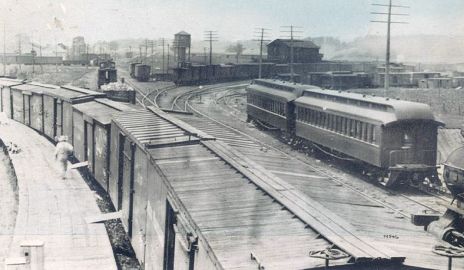If it is a plug door, by rule it is to be closed, secured, with the hasp in the fitting BEFORE MOVING.
Conventional doors, no such rule. Conventional doors aren't the easiest things to close. Sometimes human power cannot close them (must use a fork lift or come-along). That so, when I worked the ground and was picking up an empty car with a conventional door that was open, and I couldn't close it with reasonable effort. Too bad. As long as the door was in the runners and usable, it got picked up/whatever and sent on its way. No rule infraction (at the time).
Depending on lading, picking up a loaded car with a door opened (even if partially) is a different matter. It needs to be closed and secured. If you're switching the industry after hours, then a note is made on your switchlist, and you leave the car in place. (Turning it in at the end of your shift.) IF during business hours, IF you can find a dock worker, have them secure it. IF not, then if the Car Dept is on duty, radio the Yard Office and inform them of the situation. IF you pull the loaded car with the door opened, THEN the RR is liable for the damages. THAT is a no-no.
Sure, empties SHOULD have their door(s) closed, but many, many times, they're not for reasons like the above.
Sarah:
Having some conventional doors opened on your empty models, even if partially opened, can provide you a bit of visual relief and it is prototypical. Happened often when I was railroading.
Andre







